Table of Contents
ToggleWhat Is A Curriculum?
Before getting into the stages of curriculum revision, let’s get an idea about what a curriculum revision is.
Definition: A curriculum is a master plan for selecting content and organizing learning experiences for the purpose of changing and developing learners’ behaviours and insights.
In the present, curriculum is also known as education, a curriculum is broadly defined as the totality of student experiences that occur in the educational process.The term often refers specifically to a planned sequence of instruction, or to a view of the student’s experiences in terms of the educator’s or school’s instructional goals. In a 2003 study, curriculum was referred to as a set of learning goals articulated across grades that outline the intended mathematics content and process goals at particular points in time throughout the K–12 school program. Curriculum may incorporate the planned interaction of pupils with instructional content, materials, resources, and processes for evaluating the attainment of educational objectives. Curriculum is split into several categories like the explicit, the implicit, the excluded, and the extracurricular. Let’s talk about the need for a curriculum revision before the stages of curriculum revision.
Need For Revision In Curriculum
Restructure the curriculum according to the needs, interests or abilities of the learner. To eliminate unnecessary units, teaching methods and contents. To introduce latest and updated methods of teaching and content, new knowledge and practices. To add or delete the number of teaching hours of instruction. To correlate between the student’s theory courses and learning practices. To select learning experiences based on the objectives rather than on the service needs of the society The students themselves receive little or no experience in assuming responsibilities or in making choices, everything is decided for them by the teacher or the administrator.
Questions That Arise Along The Stages Of Curriculum Revision
Based on the review, questions arise. While several primary research questions were develop, an overview of noteworthy areas include the following:
- What determined the success of the curriculum revision processes?
- Were there specific factors that had a significant impact on whether or not the revision project was successful?
- Did teachers have strong views on the process of curriculum revision processes?
- Did teacher attitudes and/or backgrounds have an impact on the success or failure of curriculum revision procedures?
- Did the revision procedures have an influence?
- What effect did pre-service training have on the revision process?
- Could the stages of curriculum revision be identified and generalized to other programs?
Stages Of Curriculum Revision
1. Principles And Purpose
Begin by establishing your curriculum principles. Your curriculum principles need to reflect your school’s values, context, approach and needs. In essence, your principles should clarify the vision for your curriculum. Discuss and define your curriculum principles, vision and intentions with all stakeholders.
2. Entitlement And Enrichment
After clarifying your principles and purpose, you should set out your pupil entitlement or pupil offer. Your pupil entitlement should explain how you intend to broaden your curriculum with educational visits, extracurricular activities and other curriculum enrichment experiences. Consider what your pupils will experience as they move through school and map these out for each year group. Link your entitlement to your curriculum principles, wherever possible.
3. Breadth And Balance
You now need to arrange your curriculum content into a list of subject schemes. Begin by looking at the programmes of study and make careful choices about what you will teach, when and why. Decide which concepts and subject aspects your curriculum will cover and how they interconnect with other subjects. You’ll then need to break these down into smaller component parts, which are the knowledge and skills objectives that provide building blocks for learning. These should be carefully arranged, revisited and built upon through your curriculum. These decisions will eventually form your school’s long-term curriculum plan.
You should underpin each subject scheme with sequenced skills and knowledge framework. You can do this by breaking the national curriculum programmes of study into progressive steps that provide subjects. The aim is to help children build a deep body of knowledge that enables them to perform increasingly complex skills.
4. Resources
The curriculum should not be let down by poor quality or resources. Inadequate resources will not only deplete the power of your curriculum but can also cause confusion and even misinform. Sourcing the best quality resources is important if you want children’s learning to be factually correct and ambitious. To make your curriculum the best it can be, insist on high-quality resources and practical equipment. Don’t reduce the impact of your curriculum by accepting anything less. Create or source high-quality resources to support your lessons, rather than the other way around. Keep a schoolwide overview of resources to avoid unnecessary repetition and ensure that content builds in complexity.
5. Review And Revise
The next step is to regularly review its impact on teaching and learning, making any adaptations or changes you need to improve it further. At this stage, you may also identify Continuing Professional Development (CPD) needs for your staff. For example, the knowledge of subject leaders might need to improve to make sure that each area of the curriculum is well taught and supported.
Why Review And Revise?
The Curriculum Committee is responsible for selecting packaged curriculum programs for the school as well as developing original curriculum for teachers to use. After a few months the leader of the committee begins to see that, while their fellow committee members are good at researching curricula and developing creative and innovative plans, they have not yet developed good systems for reviewing or revising the curriculum.
The leader will explain that reviewing the curriculum is to evaluate its effectiveness after it has been implemented. Also, reflect on what students did and did not get out of it. To revise curriculum, on the other hand, means to modify the curriculum using data from the review. Review and revision are important because they enable teachers to consider the ways curriculum interacts with actual students in a real school environment. Then the leader will decide how to help the committee to develop a set of strategies for reviewing and revising curriculum.
PS: If there’s anything more you’d like us to know about. Add it to the comments section!
We hope you enjoyed reading this blog on ‘Guide To The Stages Of Curriculum Revision’. Do check out our other blogs.


















1 thought on “Top PGDM Courses In Canada: Universities & Eligibility”
I have done Bachelor’s in Culinary Arts from India and completed my graduation in the year 2022 .I am 22 years old. After graduation, I have done 1 year paid internship from USA .Now, I would like to take occupational experience and learn culinary skills and also do masters in Culinary arts.How can I find the college n best course / country where I can persue studying further